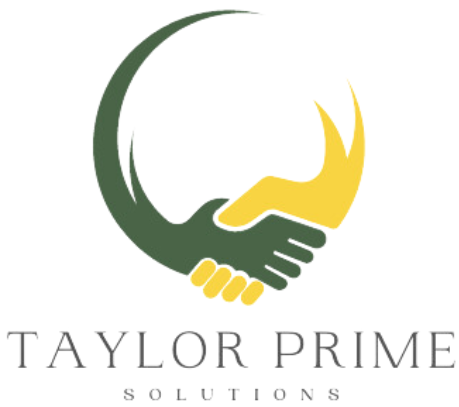A Guide to Proper ABA Billing Protocols for Maryland Providers
For Applied Behavior Analysis (ABA) providers in Maryland, staying on top of correct billing procedures is not just about efficiency — it’s a matter of compliance, timely reimbursement, and organizational success. Maryland ABA billing procedures are governed by strict payer guidelines, evolving CPT coding structures, and state-specific Medicaid requirements. Understanding these procedures ensures that your practice not only gets paid but also minimizes denials, delays, and audit risk.
Whether you’re a solo BCBA or manage a multi-site clinic, here’s what you need to know about Maryland’s ABA billing protocols.
What Are ABA Billing Procedures?
ABA billing procedures refer to the standardized steps involved in:
-
Verifying insurance and authorization
-
Delivering services according to payer guidelines
-
Submitting clean claims with accurate codes/modifiers
-
Posting payments and tracking reimbursements
-
Handling denials, appeals, and AR recovery
Unlike general medical billing, ABA billing is highly specialized. Each CPT code represents time-based services and may require specific modifiers or treatment documentation. Providers in Maryland must follow procedures defined by commercial insurers and state programs like Maryland Medicaid.
Step-by-Step: Standard Maryland ABA Billing Procedures
✅ Step 1: Verification of Benefits (VOB)
Before treatment begins, it’s critical to verify the client’s insurance coverage. Maryland ABA billing procedures require:
-
Confirming eligibility for behavioral health services
-
Checking in-network vs. out-of-network status
-
Determining if prior authorization is needed
-
Identifying annual visit limits and co-payments
Failing to verify benefits can result in non-billable sessions and lost revenue.
✅ Step 2: Authorization Management
Most payers require pre-authorization for CPT codes like 97153 (direct therapy), 97151 (initial assessment), and 97155 (supervision). Maryland Medicaid in particular outlines service limits per client, requiring progress documentation for continued care.
Billing procedures should include:
-
Tracking authorization start and end dates
-
Ensuring that the codes billed match those approved
-
Submitting re-auth requests proactively
✅ Step 3: Session Documentation & EMR Integration
Proper session notes are vital for compliance. Providers must log:
-
Time spent on each activity
-
Behavior plan progress
-
Provider credentials
-
Service location and delivery method (in-person vs. telehealth)
Integrating your EMR (e.g., CentralReach, Kipu, SimplePractice) with your billing system helps automate this step and avoid manual entry errors.
✅ Step 4: Coding and Claim Submission
Billing for ABA requires careful coding with modifiers. Commonly used CPT codes include:
-
97153 – Adaptive behavior treatment, 15-minute increments
-
97155 – Supervision of technician, real-time or asynchronous
-
97151 – Assessment and treatment planning
-
0362T – Intensive treatment in a group setting
-
97156 – Parent training and family guidance
Procedures include:
-
Scrubbing claims before submission
-
Applying correct diagnosis pointers and modifiers
-
Matching billed services to the treatment plan
-
Sending claims through clearinghouses like Office Ally or Waystar
✅ Step 5: Payment Posting & Denial Resolution
After submission, the billing team should:
-
Post Electronic Remittance Advice (ERA) or Explanation of Benefits (EOB) within 24–48 hours
-
Track underpayments, missing payments, or denials
-
Appeal denied claims with the correct documentation
-
Provide weekly reports showing outstanding balances and AR trends
This stage of the billing procedure is crucial for cash flow and financial forecasting.
✅ Step 6: Compliance and Ongoing Monitoring
Maryland ABA billing procedures must follow HIPAA, state regulations, and payer contract terms. An internal compliance process should include:
-
Secure PHI handling
-
Limited access billing software
-
Training on documentation audits and coding updates
-
Medicaid and payer-specific compliance reviews
Maryland ABA therapy providers can’t afford billing errors
By following structured Maryland ABA billing procedures, practices reduce administrative burden, accelerate payments, and remain audit-ready.
The most successful ABA clinics in Maryland implement procedures that are:
-
Tailored to their EMR and payer mix
-
Documented and repeatable across staff
-
Built around real-time reporting and compliance checkpoints
Need help implementing or improving your billing process? That’s where we come in.
Maryland ABA billing services must follow strict guidelines set forth by state programs, such as the Maryland Medicaid ABA Program, which outlines requirements for provider enrollment, CPT code usage, and service documentation. We make sure these guidelines are followed.
Contact Us for Maryland ABA Billing Support
📞 Taylor Prime Solutions offers full-service ABA billing — from verification to payment posting — with strict adherence to Maryland-specific procedures. Whether you’re just starting or scaling, we’ll build a system that works.
👉 Contact us today or call 844-TAYLOR-9 for a free consultation.
Let’s streamline your billing so you can focus on transforming lives.


